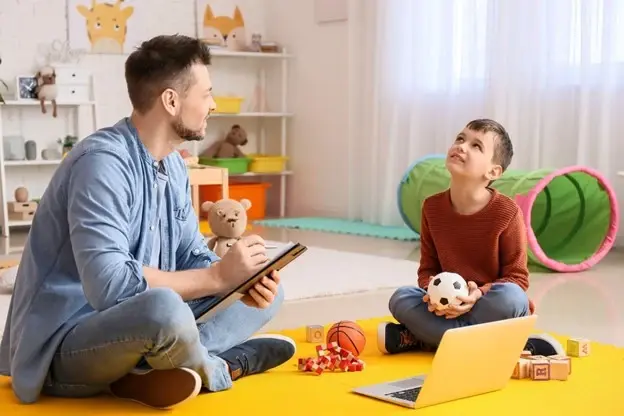Preparing for a New Baby with an Autistic Child: A Parent’s Guide
August 18, 2025

Introduction
Welcoming a new baby is exciting, but when you’re already parenting a child with autism, it can feel overwhelming. Many parents worry about balancing a newborn’s demands with an autistic child’s needs, like frequent therapies, emotional regulation challenges, or sensitivity to change. The fear of disrupting routines or triggering behaviors can add stress to an already big transition. This guide offers practical, parent-friendly strategies to prepare your family, support your autistic child, and manage everyone’s needs during this exciting but challenging time. With the right tools, you can make the shift smoother for the whole family.
Why Family Transitions Can Be Challenging
Children with autism often thrive on routine and predictability. A new baby’s arrival—complete with crying, new schedules, and divided attention—can disrupt this stability, potentially leading to meltdowns, regression, or increased anxiety. Communication challenges or sensory sensitivities may make it harder for your child to adjust to a sibling, requiring thoughtful preparation to ease the transition.

The Importance of Preparing for a New Baby
Proactively supporting your autistic child during this change helps maintain their emotional stability, strengthens family bonds, and reduces parental burnout. Early preparation builds resilience, helping your child adapt to the new family dynamic while keeping routines intact.
10 Tips to Ease the Transition for Your Autistic Child
Here are ten strategies to help your child with autism adjust to a new sibling.
- Use Social Stories
Create a picture-based story about the new baby, showing what to expect, like feeding or crying. Read it daily to build familiarity.
- Maintain Routines
Keep therapy schedules, bedtimes, or meals as consistent as possible. Predictability helps your child feel secure amid change.
- Introduce Baby Sounds Gradually
Play recordings of baby cries at low volume to desensitize your child to new noises. Increase exposure slowly to avoid sensory overload.
- Involve Your Child
Let your child help with simple tasks, like picking a baby blanket. Small roles foster connection without overwhelming them.
- Create a Calm Space
Set up a quiet area with sensory tools, like headphones or a weighted blanket, for your child to retreat during chaotic moments.
- Practice Communication Cues
If your child uses an AAC device or signs, teach baby-related words like “sister” or “bottle” to express feelings or needs.
- Lean on Support
Arrange family help or respite care for short breaks. Even an hour to focus on one child can recharge your energy.
- Praise Positive Interactions
Celebrate moments like your child looking at the baby calmly. Rewards, like a favorite snack, reinforce sibling bonding.
- Consult Therapists
Ask your child’s therapist (e.g., OT or BCBA) for tailored strategies to manage behaviors during the transition. Schools or Medicaid may offer
support. - Join Parent Groups
Connect with autism parent groups online or locally to share tips and hear how others managed adding a sibling.

Nurturing Your Family’s Potential
Every small step—like your child tolerating the baby’s presence—is progress. Celebrate these wins and involve your child in fun sibling moments, like singing to the baby, to build connection. Gradual adjustments help everyone thrive.

When to Seek More Support
If behaviors like meltdowns or elopement increase, consult a behavior specialist or therapist. They can assess triggers and suggest plans to ease the transition, ensuring both kids’ needs are met. VillageED is here to help. Our free webinars and 1:1 assessments with autism experts offer practical solutions for family transitions. Visit our resources for more tips: https://www.villageed.org/articles

